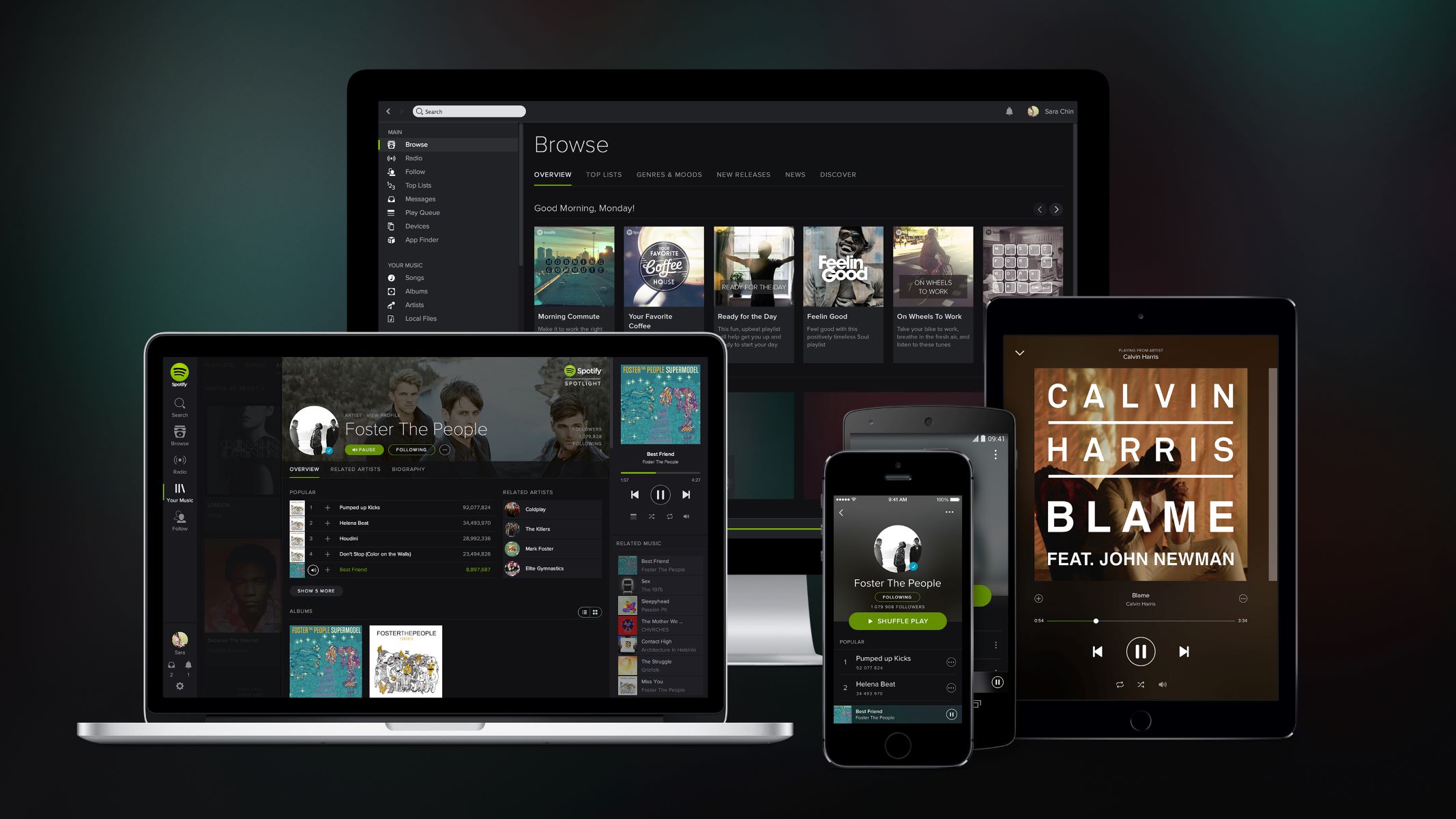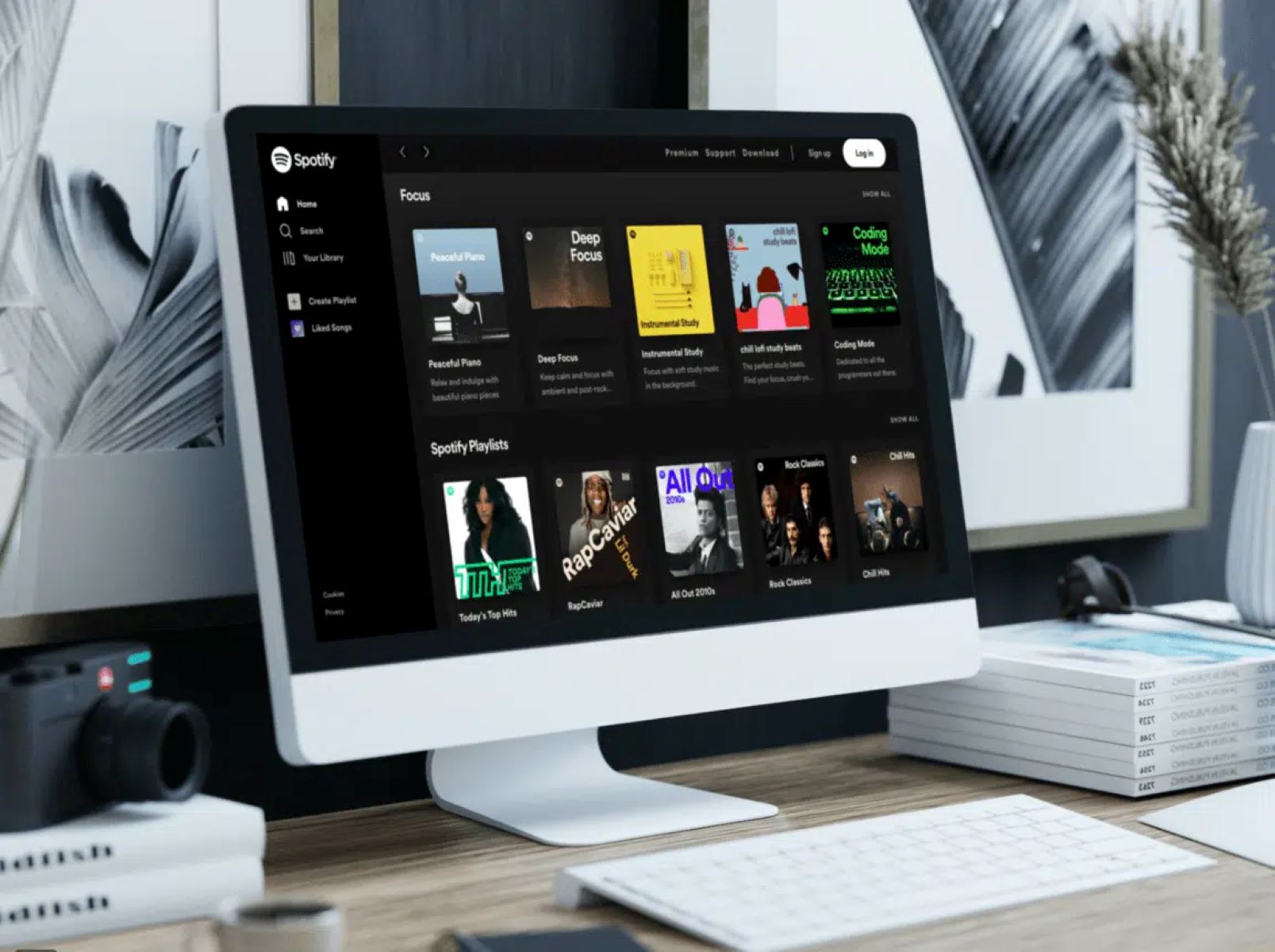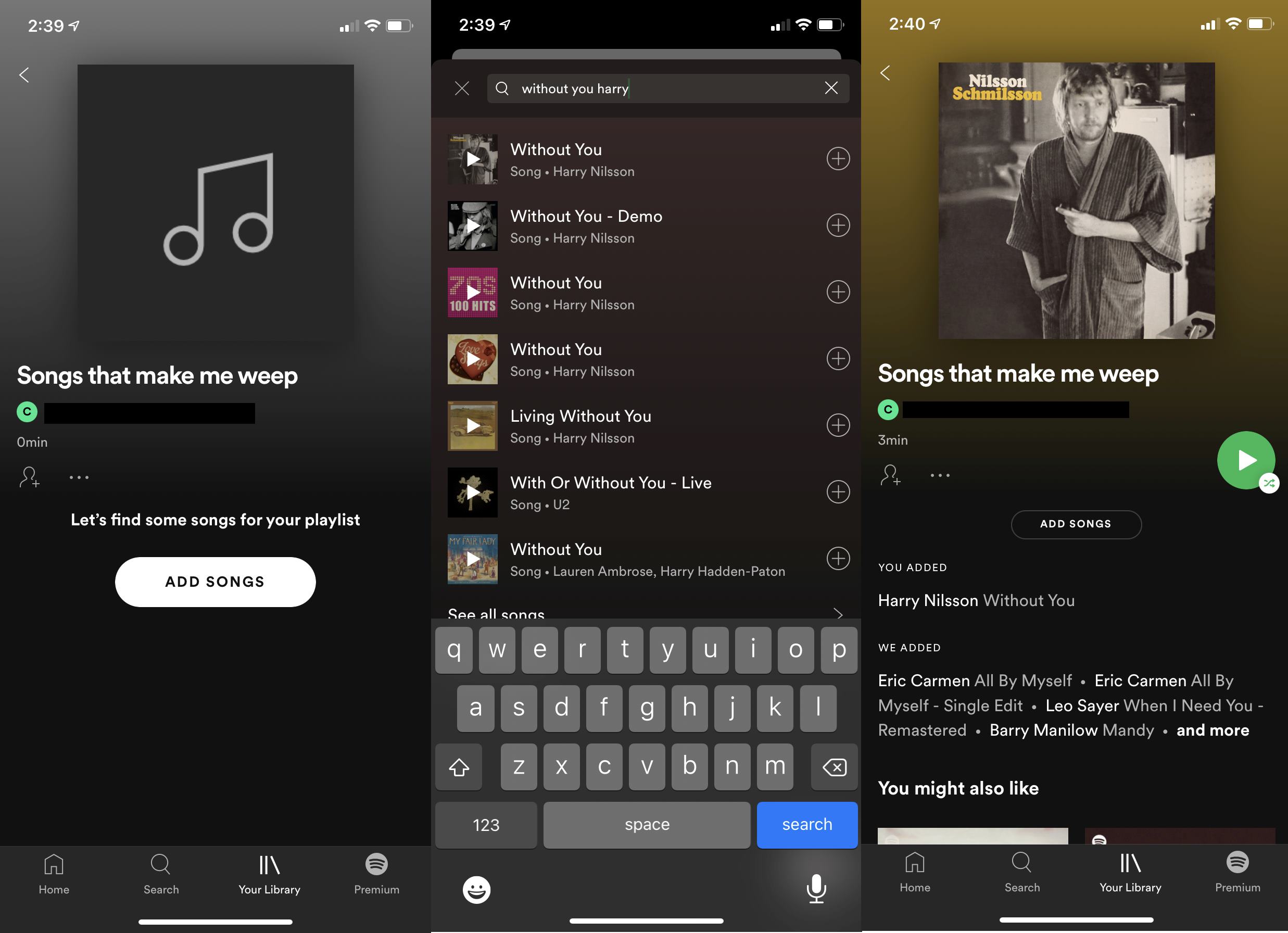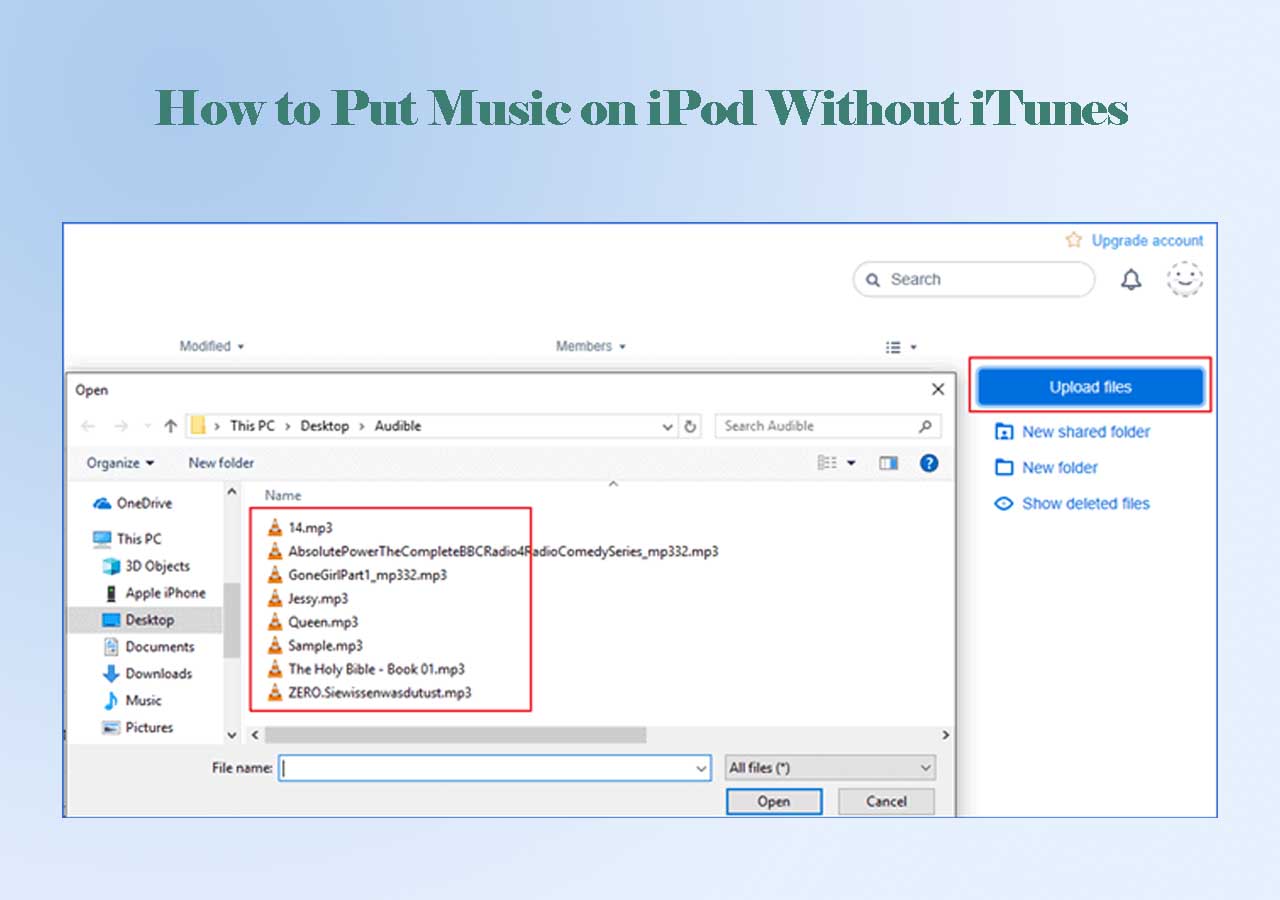Introduction:
Welcome to the world of Spotify, the popular music streaming platform that allows artists to share their music with millions of listeners worldwide. If you’re an aspiring musician or a band looking to upload your songs on Spotify, you’ve come to the right place.
In this article, we will guide you through the step-by-step process of uploading your songs on Spotify. From creating a Spotify artist account to providing song information and finally promoting your music, we’ll cover all the necessary steps to get your songs live on this influential platform.
With over 320 million active users, Spotify provides an incredible opportunity for artists to showcase their talent, reach a wide audience, and potentially gain new fans. Whether you are an independent artist or part of a record label, uploading your songs on Spotify can significantly boost your music career.
However, it’s important to note that Spotify has specific guidelines and requirements for uploading music. Understanding these guidelines and following the necessary steps is crucial to ensure that your songs are uploaded successfully and available for streaming to millions of Spotify users.
So, if you’re ready to share your musical creations with the world and take advantage of the vast audience and exposure that Spotify offers, let’s jump into the step-by-step process of uploading your songs and getting them available on this popular music streaming platform.
Step 1: Creating a Spotify Recording Artist Account
The first step in uploading your songs on Spotify is to create a Spotify recording artist account. This account will allow you to manage your music, track its performance, and connect with your audience. Follow the steps below to create your account:
- Visit the Spotify for Artists website.
- Click on the “Get Access” button located on the top right corner of the page.
- If you don’t have an existing Spotify account, you’ll be prompted to sign up for one. Fill in the required information and follow the instructions to create your account.
- If you already have a personal Spotify account, log in using your existing credentials.
- Once you’re logged in, you’ll need to claim your artist profile. Search for your artist name in the search bar provided and select your profile from the search results.
- If you can’t find your artist profile, you may need to submit a request to Spotify to have it created. Follow the instructions on the screen to submit your request.
- Once you’ve claimed your artist profile or submitted a request, Spotify will review your request and grant you access to the Spotify for Artists platform. This process may take a few days, so be patient.
- Once your request has been approved, you’ll receive an email from Spotify with instructions on how to complete your artist profile setup.
- Follow the instructions in the email to set up your artist profile, including adding a profile picture, bio, and social media links. This will help fans connect with you and learn more about your music.
Creating a Spotify recording artist account is a crucial first step in the process of uploading your songs. It gives you access to Spotify for Artists, where you can manage your music, track your performance, and gain valuable insights into your audience and streaming data.
Once you’ve created your Spotify recording artist account and set up your artist profile, you’re ready to move on to the next step: gathering the necessary materials for uploading your songs on Spotify.
Step 2: Gathering the Necessary Materials
Before you can upload your songs on Spotify, it’s important to gather all the necessary materials to ensure a smooth and successful upload process. Here are the materials you’ll need:
- Your Finished Songs: Make sure you have your songs finalized and ready to be uploaded. This includes having your tracks mixed, mastered, and in the desired format for uploading.
- Song Artwork: Each song you upload on Spotify requires artwork that represents the track. This artwork should be in square format, with a recommended size of at least 640 x 640 pixels. Ensure that the artwork accurately reflects the mood and vibe of your song.
- Metadata: Metadata is essential for organizing and categorizing your songs on Spotify. It includes information such as the song title, artist name, album name (if applicable), release date, genre, and composer credits. Make sure you have this information ready for each song you plan to upload.
- ISRC Codes: International Standard Recording Codes (ISRC) are unique codes assigned to each track to help identify and track its usage. If you don’t already have ISRC codes for your songs, you can acquire them by registering with agencies like your local music rights organization or by working with a digital distributor.
- Lyrics (optional): If you want to display the lyrics of your songs on Spotify, you’ll need to provide the lyrics in a separate text document or as part of the song file’s metadata. This step is optional, but it can enhance your listeners’ experience.
By gathering these necessary materials in advance, you’ll be well-prepared to proceed with the upload process smoothly. It’s important to ensure that your songs are properly mixed, mastered, and ready to be shared with the world. Additionally, having high-quality artwork and accurate metadata will help your songs stand out and be discovered by listeners on Spotify.
Once you have all the materials ready, you can move on to the next step: preparing your song files for uploading on Spotify.
Step 3: Preparing Your Song Files
Now that you have gathered all the necessary materials, it’s time to prepare your song files for uploading on Spotify. Follow these steps to ensure your songs are properly formatted and optimized for streaming:
- File Format: Spotify accepts audio files in the .wav, .flac, and .mp3 formats. Make sure your songs are converted to one of these formats before uploading. It’s recommended to use a high-quality format like .wav or .flac to preserve the audio fidelity.
- Bitrate and Sample Rate: For optimal audio quality, it’s recommended to use a minimum bitrate of 256 kbps and a sample rate of 44.1 kHz. Higher bitrates and sample rates can be used for even better quality, but keep in mind that larger file sizes may affect upload and streaming speeds.
- File Organization: To make it easier for Spotify to process your songs, it’s important to organize your files properly. Each song should be in its own separate folder, with the audio file and associated artwork placed together. This helps maintain the integrity of your song metadata during the upload process.
- File Naming: When naming your song files, make sure to follow Spotify’s guidelines. Use alphanumeric characters and avoid any special characters or symbols. Clear and concise file names that include the song title and version (if applicable) are recommended.
- Mastering Considerations: If you haven’t already done so, consider mastering your songs before uploading them to Spotify. Mastering helps enhance the overall sound quality, loudness, and consistency across your tracks, ensuring they sound professional and cohesive.
- Check for Errors: Before proceeding with the upload, take the time to double-check your song files for any errors or glitches. Listen carefully to each song to ensure that the audio is clean, there are no skips or dropouts, and the overall quality meets your expectations.
By following these preparation steps, you’ll ensure that your song files are in the appropriate format and quality for uploading on Spotify. Proper organization and file naming will help streamline the upload process, while mastering your songs before upload will enhance their sonic characteristics.
Once you have prepared your song files, you’re ready to move on to the next step: creating your release on Spotify for Artists.
Step 4: Creating Your Release on Spotify for Artists
Now that you have your songs prepared, it’s time to create your release on Spotify for Artists. This step involves providing key information about your songs and setting the release date. Follow these steps to get started:
- Log in to Spotify for Artists: Using your Spotify recording artist account, log in to the Spotify for Artists platform. If you haven’t already set up your account, refer back to Step 1 for instructions on creating one.
- Navigate to Your Music: Once logged in, you’ll be directed to your dashboard. Find the “Music” tab on the left-hand side of the screen and click on it to access your music library.
- Select “Upload a Release”: Within the Music section, locate and click on the “Upload a Release” button. This will start the process of creating your release on Spotify.
- Artist and Release Information: Fill in the required fields with accurate information about the artist name, release title, and other relevant details. Make sure to follow Spotify’s guidelines for formatting and avoid any special characters or symbols.
- Choose the Release Type: Select the appropriate release type for your songs. This can include options like a single, EP (extended play), or album. Choose the most suitable option based on the number of songs you’re uploading.
- Add Track Information: Enter the track details for each song you’re uploading. This includes the song title, featuring artists (if applicable), genre, and other relevant information. Take your time to ensure accuracy as this information will be displayed to listeners on Spotify.
- Set the Release Date: Choose the release date for your songs. This is when your songs will become available for streaming on Spotify. Consider your marketing strategy and any promotional efforts you plan to make before setting the release date.
- Upload Artwork: Upload the artwork for your release. Ensure that the artwork meets Spotify’s guidelines for size, format, and content. This helps create a visually appealing representation of your songs on the platform.
- Preview and Review: Once you’ve provided all the necessary information and uploaded your artwork, preview and review the release to make sure everything is accurate. Double-check the track details, release date, and artwork to ensure they reflect your intentions.
Creating your release on Spotify for Artists is a crucial step in making your songs available on the platform. By providing accurate and compelling information about your songs, you can effectively engage listeners and increase the chances of your songs being discovered. Take your time to review all the details before submitting your release.
Once you’ve created your release, you’re ready to move on to the next step: providing song information and metadata.
Step 5: Providing Song Information and Metadata
After creating your release on Spotify for Artists, it’s time to provide detailed song information and metadata. This step is crucial as it helps organize and categorize your songs accurately on the platform. Follow these steps to provide the necessary information:
- Song Title and Version: Ensure that the song title you provided during the release creation step matches the actual song title. Specify the version of the song if applicable (e.g., remastered version, live performance).
- Artist Name: Double-check that the artist name associated with each song is correct. This could be your individual name, band name, or any other artist name you use.
- Featuring Artists: If your songs feature other artists, make sure to credit them accurately. Provide the correct spelling and formatting of their names to ensure proper recognition.
- Genre: Choose the genre(s) that best represent your song. Spotify offers a wide range of genres to choose from, so select the most appropriate genre(s) to accurately categorize your music.
- Explicit Content: Specify whether your songs contain explicit lyrics or explicit content. This helps Spotify apply the appropriate content filters and ensure the song is labeled correctly for listeners.
- Composer and Songwriting Credits: If you have multiple composers or songwriters involved in your songs, provide the accurate credits for each individual. This recognizes their contributions and ensures proper royalty distribution.
- Additional Credits: If there are any additional credits you want to include, such as producer, mixer, or other contributors, make sure to add them. It’s important to acknowledge everyone involved in the creation process.
- Lyrics: If you want to display the lyrics of your songs on Spotify, provide the accurate lyrics either in a text document or as part of the song file’s metadata. This enhances the listening experience for your audience.
By providing accurate and comprehensive song information and metadata, you enable Spotify to properly categorize your music and improve discoverability for potential listeners. Take the time to review and verify all the details to ensure they align with your intentions.
Once you have provided the song information and metadata, you’re ready to move on to the next step: uploading your song files on Spotify.
Step 6: Uploading Your Song Files
Now that you have prepared all the necessary information, it’s time to upload your song files to Spotify. Follow these steps to successfully upload your songs:
- Access Spotify for Artists: Log in to your Spotify for Artists account using your credentials. Make sure you have the necessary permissions to upload songs.
- Navigate to Your Music Library: Once logged in, go to your music library by clicking on the “Music” tab in the left-hand menu. This will display all your releases and uploaded songs.
- Choose Your Release: Locate and select the release you want to upload songs to. This will open the release details page.
- Click on “Add Song”: On the release details page, click on the “Add Song” button. This will prompt you to select the song file you want to upload.
- Select the Song File: Choose the corresponding song file from your computer or external storage device. Ensure that the file is in the correct format (.wav, .flac, or .mp3) and adheres to Spotify’s guidelines.
- Wait for Upload and Processing: After selecting the song file, Spotify will begin uploading and processing it. The time it takes to complete this process may vary depending on the size of the file and your internet connection speed.
- Review Song Details: Once the upload and processing are complete, Spotify will display the song details. Review the information to ensure its accuracy and make any necessary edits or additions.
- Repeat for Additional Songs: If you have multiple songs to upload, repeat the previous steps for each song, adding them one by one to the release.
- Save and Submit: After adding all the songs and reviewing their details, click on “Save” or “Submit” to finalize the upload process. This officially adds the songs to your release on Spotify.
By following these steps, you can successfully upload your songs to Spotify and make them available for streaming to millions of listeners. Take your time to ensure the accuracy of the song details before saving or submitting the upload.
Once your songs are uploaded, Spotify will process them for availability. The amount of time it takes for your songs to be live on the platform may vary, so be patient and check back periodically to see when your music is ready to be shared with the world.
Now that you have uploaded your songs, it’s time to move on to the next step: reviewing and submitting your release.
Step 7: Reviewing and Submitting Your Release
After uploading your songs on Spotify, it’s crucial to carefully review and submit your release to ensure everything is accurate before it goes live. Follow these steps to review and submit your release:
- Access Spotify for Artists: Log in to your Spotify for Artists account and navigate to the release that you have uploaded songs to. Ensure that all the songs are visible and correctly listed.
- Check Song Titles and Details: Review the song titles, featured artists (if applicable), and all other song details. Verify that the information matches your intended release and make any necessary edits.
- Review Song Order: Confirm the order in which your songs are arranged. If you prefer a specific sequence for your songs, you can adjust the order by using the drag-and-drop feature within Spotify for Artists.
- Verify Artwork: Double-check that the artwork associated with your release is displayed correctly. Ensure that the artwork accurately represents your music and adheres to Spotify’s guidelines.
- Preview and Listen: Before submitting your release, take the time to preview each song and listen to them to ensure the audio quality and content are as expected. Confirm that there are no errors, glitches, or inconsistencies in the audio files.
- Ensure Metadata Accuracy: Review the metadata for each song, including genre, explicit content labeling, and composer credits. Make any necessary adjustments to ensure accuracy and consistency.
- Consider Release Date: Double-check the release date you set for your songs. Ensure that it aligns with your marketing strategy and any promotional efforts you have planned.
- Submit Your Release: Once you are satisfied with all the details, click on the “Submit” or “Save and Submit” button to finalize the process. This officially submits your release to Spotify for review.
Reviewing and submitting your release is a crucial step to ensure the accuracy and integrity of your music on Spotify. By carefully reviewing all the details, you can ensure that your songs are presented as intended and are ready to be shared with your audience.
After submitting your release, Spotify will review it to ensure it meets their quality guidelines and standards. This process may take some time, but once approved, your songs will be live on the platform and available for streaming to millions of listeners.
Now that your release is submitted, it’s time to move on to the final step: promoting your uploaded songs on Spotify.
Step 8: Promoting Your Uploaded Song on Spotify
Now that your songs are live on Spotify, it’s time to promote and share your music to reach a wider audience. Here are some key strategies to effectively promote your uploaded songs:
- Create a Playlist: Curate a playlist featuring your songs along with other tracks that complement your music style. Share this playlist with your followers and encourage them to share it with their networks.
- Engage with Your Audience: Interact with your listeners by responding to comments and messages. Show appreciation for their support and encourage them to share your songs with their friends and followers.
- Share on Social Media: Utilize your social media platforms to promote your songs. Create visually appealing posts, snippets, or teasers highlighting your music. Engage with your audience by asking for their feedback or encouraging them to share your songs.
- Collaborate with Other Artists: Reach out to other musicians or artists in your genre and explore collaboration opportunities. Collaborative projects can help expand your listener base and expose your music to new audiences.
- Submit to Curated Playlists: Research and identify popular playlists on Spotify that align with your music genre. Submit your songs to these playlists and engage with the curators. Getting featured on relevant playlists can significantly boost your exposure and streams.
- Share Behind-the-Scenes Content: Give your audience a glimpse into your creative process and share behind-the-scenes content such as recording sessions, songwriting sessions, or music video production. This creates a deeper connection with your fans and generates interest in your music.
- Create Music Videos: Produce captivating music videos for your songs and upload them to platforms like YouTube or Vimeo. Promote these videos on your social media platforms and within your Spotify artist bio to enhance your visual presence.
- Collaborate with Influencers: Reach out to influencers or bloggers in the music industry who have an established audience. Collaborating with them can expose your music to a wider fanbase and generate more plays and engagement.
- Perform Live and Seek Media Coverage: Book live performances and seek media coverage for those events. Performances and positive reviews can strengthen your credibility and attract new listeners to your music on Spotify.
- Stay Active and Consistent: Regularly release new music, engage with your audience, and maintain an active presence both on Spotify and other social media platforms. Consistency is key to building a loyal fanbase and gaining traction on the platform.
By implementing these promotion strategies and continuously engaging with your audience, you can gradually increase your exposure and fanbase on Spotify. Remember, promoting your music is an ongoing process, so continue to explore new avenues and connect with your listeners to maximize your reach and impact.
Congratulations on successfully promoting and sharing your uploaded songs on Spotify!
Conclusion
Uploading your songs on Spotify is an exciting step towards reaching a vast audience and sharing your music with the world. By following the step-by-step process outlined in this guide, you can navigate the various stages of uploading your songs smoothly and efficiently.
From creating a Spotify recording artist account to gathering the necessary materials, preparing your song files, creating your release, providing song information and metadata, uploading your song files, reviewing and submitting your release, and promoting your uploaded songs, each step is essential for a successful journey on the Spotify platform.
Remember to pay attention to the details, such as accurate song titles, proper metadata, high-quality artwork, and engaging promotion strategies. These elements will not only enhance the listener experience but also increase the chances of your songs being discovered by a wider audience.
Utilize social media, collaborations, playlists, and live performances to your advantage in promoting your music on Spotify. Engage with your listeners, build relationships, and continue to release new content to maintain momentum and attract new fans.
Through consistent effort, dedication, and effective promotion, you can make the most of the opportunities that Spotify offers to artists. The platform’s vast user base, playlists, and algorithm-driven recommendations can drive your music towards success, allowing you to connect with listeners around the world.
So, take the first step today and start uploading your songs on Spotify. Embrace the power of the platform to share your music, build a fanbase, and take your music career to new heights.
We wish you the best of luck on your musical journey!

























